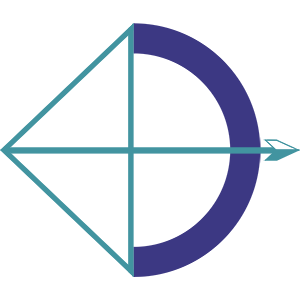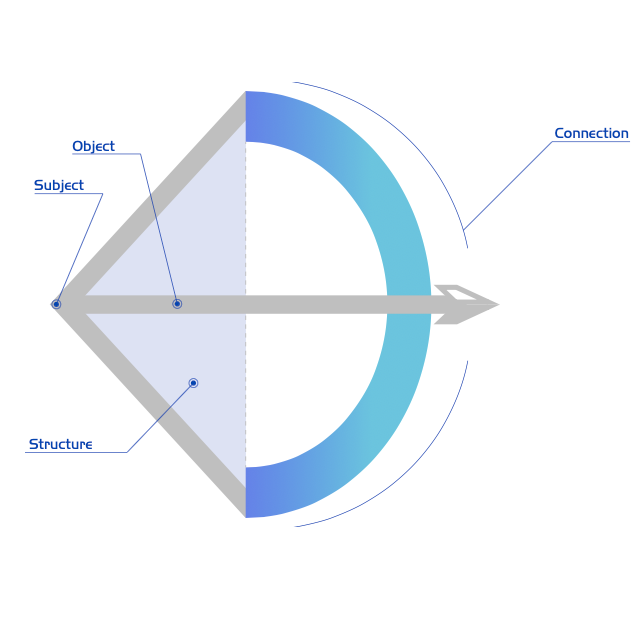
Journey
The path traveled for the development of syncplexity is, somewhat, the journey of Josep Alzamora’s professional life.
Organizational Development (1995 – 2001)
The foundation of an IT company (Info-Pro) in 1995 was the beginning of an ongoing work devoted to helping companies facing difficult times.
Not much lasted the IT focus, which permeated the project in the beginning. As the implementation of management systems passed, the expiration of the existing competitiveness models became more evident.
There were –and still are– obvious, even absurd causes of lost efficiency and competitiveness, which remain embedded within the organization's dynamics.
So was how, in the territorial scope of both southern Catalonia and northern Valencian Region, Mr. Alzamora developed the first model to help companies be more competitive. This initial, rudimentary proposal was structured around eliminating the four primary sources of loss of competitiveness that had been observed, which, in 2000 – 2001, came to be known as “The Four Paradoxes of Competitiveness.”
This first approach to organizational competitiveness was cemented with a very intense study and research that somehow ended up revolving around the models of Total Quality Management and Deming’s Profound Knowledge. Nevertheless, the more Mr. Alzamora knew the quality culture, the clearer became its insufficiency for the future challenges that organizations will have to face.
It was no question of whether "this" or "that" method or tool might work better nor whether the focus should be on better quality or more "something else." The question was more profound, as it was in the very foundations of the productive model. According to Mr. Alzamora’s vision, even with a proper implementation of methodologies as robust as total quality or similar, companies had substantial competitiveness losses, at least regarding their real potential.
That was how, on the foundations of the deepest causes of loss of competitiveness, the Sustainable Viability model began taking shape.
Sustainable Viability (2001 – 2012)
With the growth of the geographical scope of customers, the Info-Pro project moved to Barcelona in 2001, where, under the name of E-21 System Group, it was founded what today is syncplexity.
In this new stage, the priority of Josep Alzamora was to consolidate the research process initiated in 1995-2001, for which he presented his proposal for sustainable competitiveness in various forums in Europe and the United States. Along with the lectures given, he consolidated his approach to organizational competitiveness with the help of world experts in different fields. From 2001 to 2005, the E-21 System Group was developing a structure of collaborators in Barcelona, Geneva, and Dallas.
In 2005, the Dallas office brought a project to implement Sustainable Viability in a company in Mexico City. In the beginning, it was assumed that something that worked in the most advanced economic contexts would also work in a not-so-competitive ambiance. It turned out to be a tremendous mistake. It is just the opposite: the absence of abundant resources exponentially raises the ability to thrive up to levels, for which the competitiveness models, initially designed on the premise of working with a minimum of means and rules, are not prepared. Furthermore, the Mexican market was far from not-so-competitive but hypercompetitive.
Unquestionably, excellence has to be an essential part of any organizational culture. However, what can we do when there are no leaders or time to develop them? What is the answer when the environmental driving forces are focused on a direction opposite to leadership? A business company simply cannot wait for a profound change in social standards and ethics.
When leadership is little more than an unattainable desire and labor turnover is above 100% per year, thinking of quality is not realistic. When sales strategies are extensively based on progressive and continuous discounts, stopping the bleeding of selling below cost needs something else. The list may go on, but, in short, the initial proposal for competitiveness that worked successfully in highly developed contexts had to adapt to two new premises: a massive lack of focus on leadership and a hyper-aggressive competition.
Development of People’s Profile
Adopting an entirely strange concept is more manageable when individuals have some nearby references that facilitate the adaptation of their mindset to the new paradigm. Hence, if a USA company decides to reinforce its leadership culture, it will be a relatively simple process because of the abundance of good examples around them. On the contrary, embracing it can be challenging when there is no close experience of what a person is trying to understand.
Considering that its principles or beliefs shape a person’s logic, the absence of something to be compared with has to be replaced by a particular development of that logic. From that assumption, the Sustainable Viability proposal was re-shaped to support the development of people’s profiles for precise results. That was the origin of the Executiveness approach.
Emotions and Emotional Bonding
When the competition makes offers based on discounts and price cuts progressively close to the product cost, something compelling is needed to increase sales while not damaging the chances of achieving a reasonable markup.
Thus, the first step was to revise the very concept of selling, which led to the necessity of managing emotions and emotional bonding as the core concepts of the sales strategy. The result of that work was the development of a specific methodology named Integration.
So, this was how, year after year, the new model of competitiveness helped Mexican companies from many industries: graphic printing and cardboard packaging, automotive products, components for white goods, plastic containers, food products retail, mobile phone services, department store chains, and electronics and telecommunications engineering. Besides the most tangible results, the effective change in some entrenched paradigms where no references were available was probably the most relevant outcome.
However, thinking that, based on well-tested excellence, the addition of the two empirically proven methodologies mentioned above—Executiveness and Integration—would be powerful enough to face any situation, no matter its complexity, was another mistake.
After almost eight years working in the Mexican market, the method still had a shocking test to experience: the Spanish real estate development sector.

Expansive Emotional Management [EEM] (2013 – present time)
In late 2012, Josep Alzamora decided to come back to Spain. What he found was a bleak situation as a result of two combined crises: The Global Financial Crisis, which, since 2007, affected with devastating force the Spanish banking and finance sectors, and the Construction Crisis, which was a direct consequence of the burst of the “housing bubble” in 2008.
In that context, early 2013, Mr. Alzamora accepted to help a real estate development and construction company based in Castellon province.
Castellon was a region highlighted by all indicators’ negativity (always between the first or the second place in the ranking of the worst) related to real estate development and construction. Also, Castellon is where that company had its headquarters and all of its business activity.
The most critical problem, in this case, was the sudden disappearance from the market of the prospective customers for their products. Moreover, the former allies (banks) became the toughest competitors besides being the holders of the loans on which the business was founded. They offered the new real estate assets incorporated into their balance sheets at prices much lower than their cost. Hence, the market was broken twice: First, when potential buyers lost access to mortgages, in some cases, or their confidence in the economic situation, in other cases. Second, when banks started competing in the real estate market with devastating practices for the few conventional players, still in business, that had to repay the loans granted for the housing developments to those same banks.
Enhanced Essentials
In order to be able to overcome that situation, the syncplexity model based on the principles of the Expansive Emotional Management —the evolution of the Sustainable Viability approach— was thoroughly revised and fully implemented, and a comprehensive culture of “prestige” able to overcome the described scenario was delivered.
Prestige
Although many definitions of the term prestige can be appropriate, the Spanish description seemed like a good start for the model of competitiveness that we are dealing with, and it can be translated as
“public esteem for someone or something, as a result of its merit.”
Admittedly, all products offered by a company need the public’s appreciation. However, the global crisis proved that the target market had evolved. Prospective buyers were looking to accomplish their “real desires” and not just the fulfillment of mere needs. Hence, the concept of prestige applied was one in which the sense of “esteem” was enhanced with steadiness and increasing intensity.
After all those years of experience, facing situations of extreme difficulty and complexity, one thing can be assured as certain: the most potent concepts may fail if they are unable to adapt to each particular context. However, with the same humbleness rather than certainty, the syncplexity team is convinced that this is a competitiveness model worthy of being shared with society. There could have been many more naming options besides “the synchrony of complexity,” in short, syncplexity. Nevertheless, it seemed appropriate to emphasize that managing very complex situations will most certainly become a daily business.
In February 2015, the first book was published—Complex Realities by Josep Alzamora (Realidades Complejas, in its first Spanish edition)—where the principles of the prestige-based sustainable competitiveness model are outlined.
The Retail Sector
Since 2018, the principles of Expansive Emotional Management have been tested in a highly complex environment, which is the retail trade business sector. The lack of corporate resources the industry is usually found in prompted the syncplexity team to carry out intensive work to simplify the implementation parameters. However, the results show that the model's approaches are also valid for small business structures in a phase of decline.
This validity of the model was demonstrated by the results obtained during the crisis caused by COVID-19, during which all the businesses that were adopting the proposed methodology were able to survive and even prosper.
The SPX Prestige School
In the ever-evolving world of business, where hypercompetitive environments demand innovation and adaptability, the SPX Prestige School emerges in early 2025 as a pioneering institution dedicated to reshaping the concept of business competitiveness. Established in Cambridge, UK, this institution is not merely an educational entity—it is a transformative force redefining the standards of business excellence.
At the heart of the SPX Prestige School is the Expansive Emotional Management methodology, a groundbreaking approach developed over several years by Josep Alzamora and his collaborators. This methodology deciphers prestige not as an abstract ideal but as a strategic, measurable asset that can be systematically managed to enhance business performance.
Expansive Emotional Management integrates the emotional dimensions of prestige into business strategy, fostering an organizational culture that exudes excellence, inspires loyalty, and drives sustained competitive advantage. By mastering this approach, leaders, executives, and entrepreneurs can navigate complex market dynamics with confidence, leveraging prestige as a differentiating factor in their industries.
The SPX Prestige School offers a range of training programs, workshops, and hands-on implementation initiatives, ensuring that businesses can internalize and apply these methodologies effectively. Through practical learning and continuous support and direct commitment to results, participants gain the tools needed to embed the principles of prestige into their corporate identity and decision-making processes.